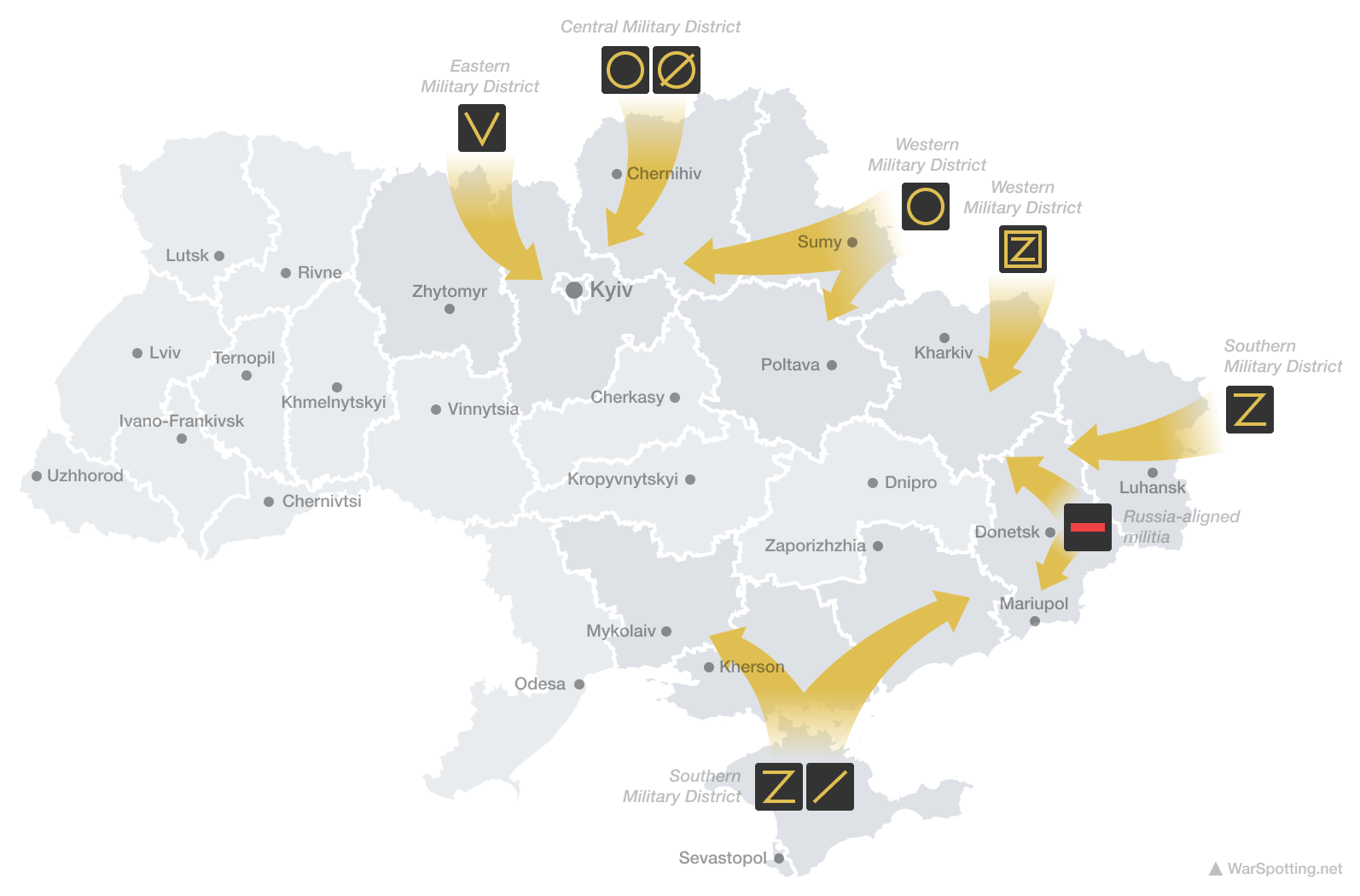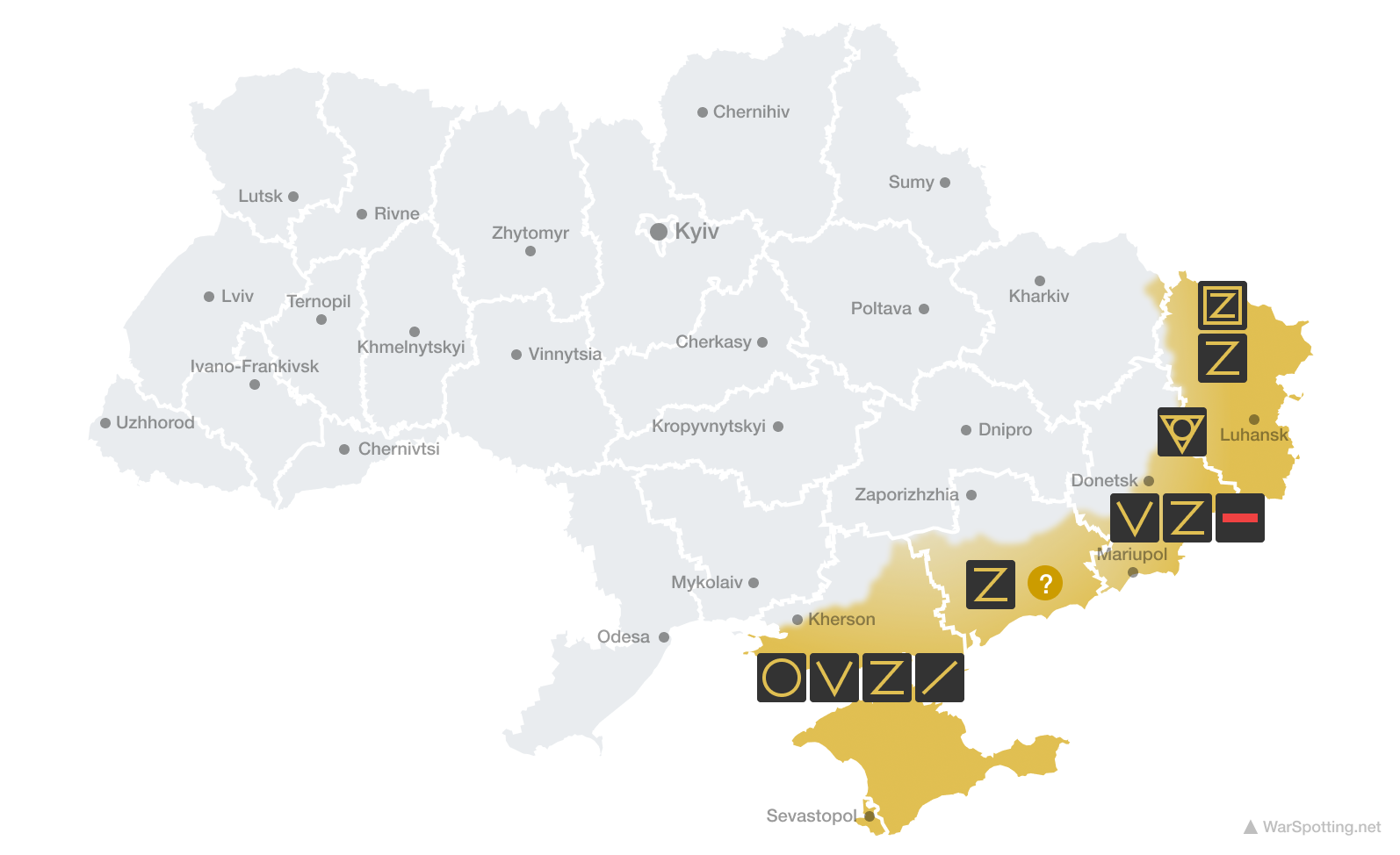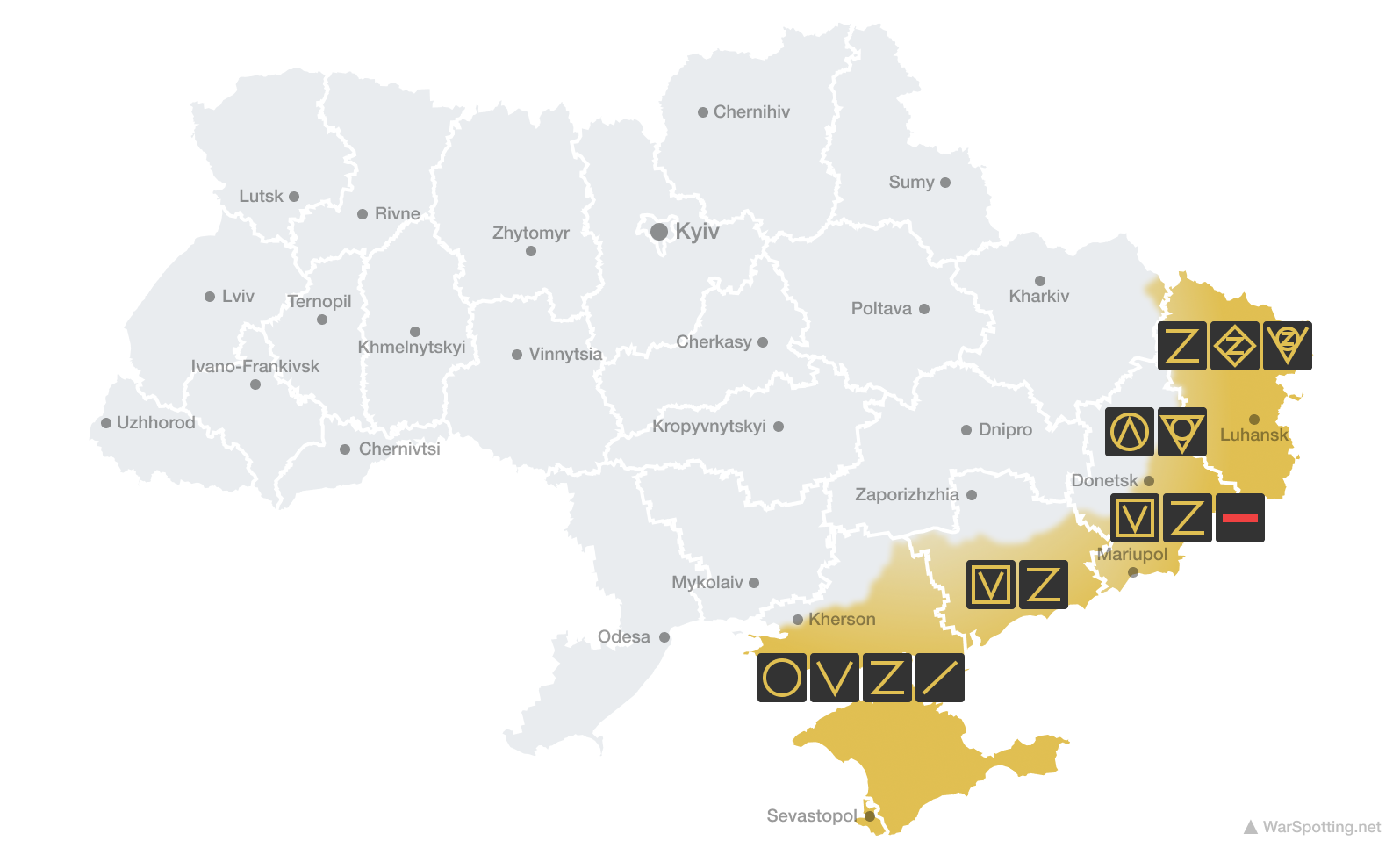Russian friend/foe signs in Ukraine: O, V, Z et al.
- What are they used for?
- They primarily serve as identification friend or foe (IFF) measure to, basically, prevent friendly fire. This is increasingly important when acting against forces that use vastly similar equipment, which is the case for Russian army in Ukraine. Ukrainian army later also developed their distinct signs for the same reasons.
- Why are different signs needed? Wouldn't just one suffice?
- We don't know. Possibly to make command and control easier with plenty units deployed simultaneously. This likely became more beneficial as different units have been re-deployed to the same areas.
- How were they assigned, exactly?
According to evidences it looks like each Russian military district along with Russia-aligned militia in Donbass has been assigned their distinct sign, some of them more than one. Brigades and smaller units seemingly never mixed signs within them, though. Here's the initial assignments on the day 1 of Russian invasion:
- Western military district:
 in Kharkiv oblast with
in Kharkiv oblast with  occasionally used in Sumy oblast.
occasionally used in Sumy oblast. - Eastern military district:
 , mostly in Kyiv oblast.
, mostly in Kyiv oblast. - Central military district:
 and
and  , mostly in Chernihiv oblast.
, mostly in Chernihiv oblast. - Southern military district:
 in the South and Luhansk oblast, with Crimean units bearing
in the South and Luhansk oblast, with Crimean units bearing  but ostensibly retiring it about the time the invasion started.
but ostensibly retiring it about the time the invasion started. - Airborne forces (VDV):
 in Kyiv oblast,
in Kyiv oblast,  and
and  in the South.
in the South. - Russia-aligned militia (DNR/LNR):
 and seldom
and seldom  .
.
- Western military district:

- Are there any exceptions?
A lot. Implementation has never been particularly meticulous to begin with. For instance, 4th tank division apparently never used any of these signs with very few vehicles for somereason bearing signs of the district they don't even belong to.
As Kyiv offensive failed and units started re-deploying, friend/foe sign usage became pretty much a mess with vehicles often times bearing morethanone sign.
 appears to be dominating above all. It's unclear if it's a deliberate act or the effect of its instrumental role in the Russian propaganda.
appears to be dominating above all. It's unclear if it's a deliberate act or the effect of its instrumental role in the Russian propaganda.- What do they mean anyway?
- We don't know. It looks like
 might be standing for Russian В in Восточный (Eastern) as well as
might be standing for Russian В in Восточный (Eastern) as well as  for З in Западный (Western). But then
for З in Западный (Western). But then  is also used for Southern district units, and there's no clear logic behind
is also used for Southern district units, and there's no clear logic behind  and
and  . Chances are there has never been any particular considerations other than simplicity and recognition.
. Chances are there has never been any particular considerations other than simplicity and recognition.
Autumn 2022 update
As war protracted, some districts started rejecting older versions and/or adopting new signs for the reasons not 100% clear:
- Western military district: still bearing
 with 4th tank division as a notable exception.
with 4th tank division as a notable exception. - Eastern military district: still bearing
 .
. - Central military district: seems to be retiring older marks in favor of newly adopted
 .
. - Southern military district: still bearing
 , with
, with  still found but virtually retired.
still found but virtually retired. - Airborne forces (VDV): now using
 ,
,  and
and  , often combined as
, often combined as  , mostly in the South.
, mostly in the South. - Russia-aligned militia (DNR/LNR): still bearing
 and
and  .
.

Summer 2023 update
- Western military district: started replacing older signs with
 in early 2023. This didn't seem to last, and was soon replaced with
in early 2023. This didn't seem to last, and was soon replaced with  , now a widely adopted standard. 20CAA seems to be using their own
, now a widely adopted standard. 20CAA seems to be using their own  along with it.
along with it. - Eastern military district: now mostly using
 .
. - Central military district: recently introduced
 that is now being used along with
that is now being used along with  .
. - Southern military district: still bearing
 , with
, with  rarely seen on older equipment.
rarely seen on older equipment. - Airborne forces (VDV): now also heavily present in the East, still widely using
 ,
,  , and
, and  as well as
as well as  .
. - Russia-aligned militia (DNR/LNR): still bearing
 , and, less often,
, and, less often,  .
.

User comments